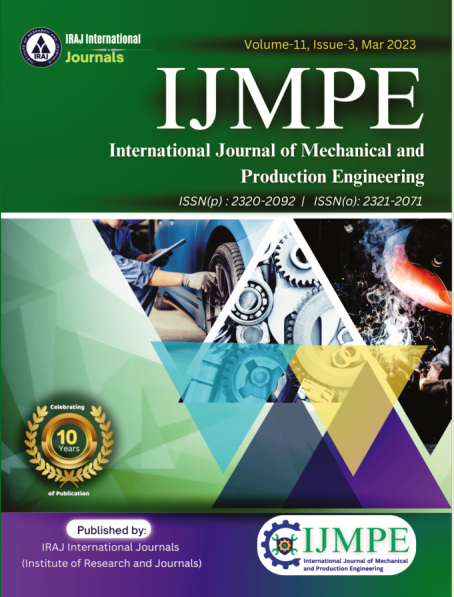Publish In |
International Journal of Mechanical and Production Engineering (IJMPE)-IJMPE |
 Journal Home Volume Issue |
||||||||
Issue |
Volume-2,Issue-4 ( Apr, 2014 ) | |||||||||
Paper Title |
Evaluation Of Tool Wear & Surface Finish Of Aisi 316l Stainless Steel Using Nano Cutting Environment | |||||||||
Author Name |
K. S. Srikanth, Jaisankar V, Jore S. Vasisht | |||||||||
Affilition |
Department of Mechanical Engineering, SCSVMV University, Kanchipuram, Tamilnadu, INDIA | |||||||||
Pages |
73-76 | |||||||||
Abstract |
Abstract- Demand for better surface finish and accuracy has been increased rapidly in recent years. A surface finish at macro molecular level has become an important parameter for machining carbon nanotubes which have been of great interest both from a fundamental point of view and for future applications. The most eye catching features of these structures are three characteristics (mechanical, optical and chemical), which open a way to future applications. For commercial applications large quantities of purified nanotubes are needed. Carbon nano tubes are to be mixed in a specific ratio (0.2%by wt.) with the cutting fluid. The changes in certain properties are to be used to enhance the machinability during turning of AISI 316L Stainless Steel. In the present work, cooling abilities of the fluid are assessed by carrying out machining tests using the fluids with and without nanoparticles. Comparative study of tool wear, cutting force, workpiece surface roughness, and chip thickness among dry machining, machining with conventional cutting fluid as well as nano-cutting fluid has been under taken. This paper aims to optimize turning parameters of AISI 316L stainless steel. Experiments were carried out by plain turning of 48mm diameter and 600mm long rod of AISI 316L Stainless steel on all geared lathe at different cutting velocities and feeds under wet machining with and without CNT inclusions. Machining tests were carried out using multi-layered TiN coated ceramics inserts. The study reveals that the cutting force is reduced by using cutting fluids with CNT inclusion. | |||||||||
| View Paper | ||||||||||